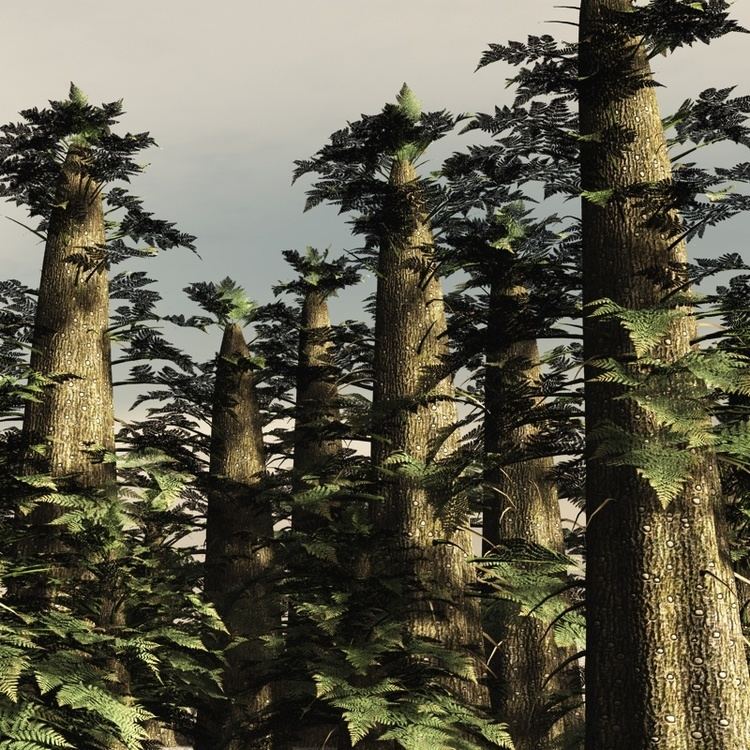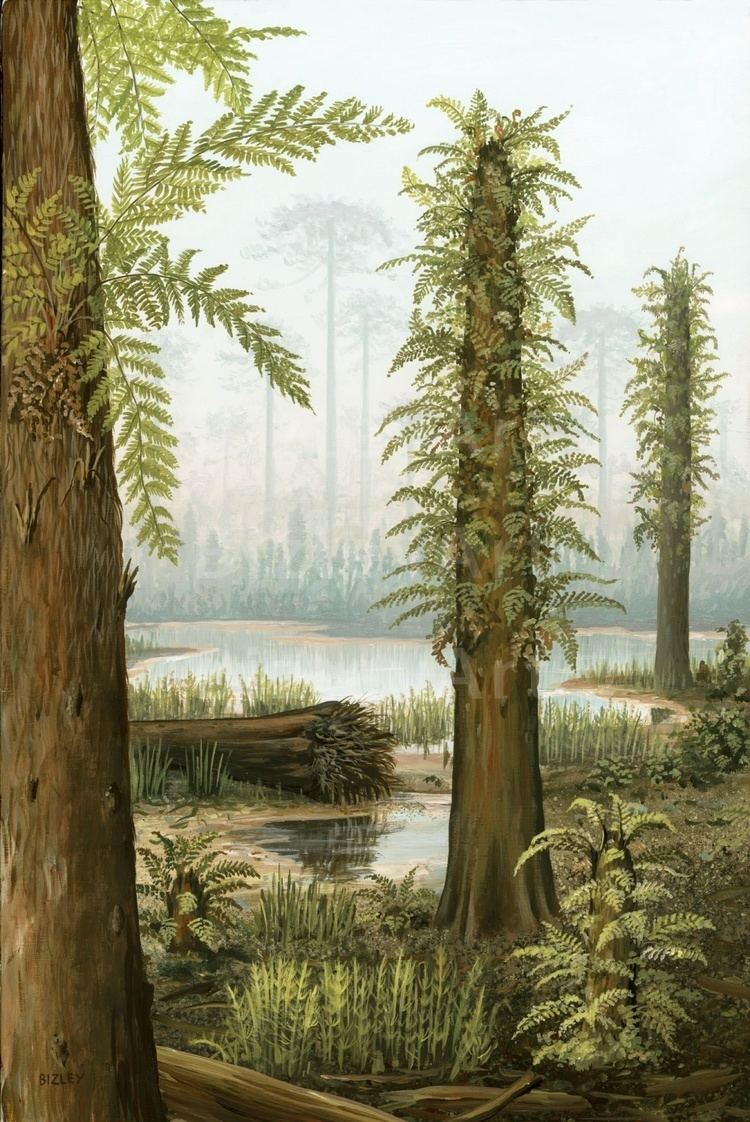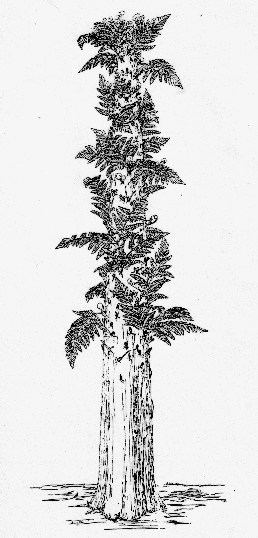Family Tempskyaceae Order Polypodiales | Division Pteridophyta Rank Genus | |
 | ||
Class Polypodiopsida, Pteridopsida(disputed) Similar Psaronius, Cycadeoidea, Williamsonia, Palmoxylon, Archaeopteris | ||
Tempskya paleontology
Tempskya is an extinct genus of tree-like fern that lived during the Cretaceous period. The genus is known from several petrified specimens from various locations across the Northern Hemisphere. Specimens have also been recovered in Argentina and Australia.
Contents

Taxonomy

Tempskya was originally described in 1824 as Endogenites erosa before being described as Tempskya by August Carl Joseph Corda in 1845. The four species originally described by Corda were, in order: T. pulchra, T. macrocaula, T. microrrhiza, and T. schimperi.
Tempskya is the sole member of its family, the Tempskyaceae.
Description

Specimens of Tempskya could grow to be up to 14.75 feet (4.5 meters) tall. Its trunk was actually a large collection of stems surrounded by adventitious roots. The false trunk could be up to 50 cm in diameter. Thin leaves have been discovered for the first time on T. wyomingense specimens; the more commonly seen fossilized leaf bases show that they covered the upper part of the trunk.
Hypothesized growth pattern

Examination of cross sections of various Tempskya specimens shows that those with the largest trunks have the smallest number of stems, and vice versa. From this, a possible growth pattern of Tempskya has been suggested: at the sporeling stage, Tempskya would consist of a single stem, which would begin to branch off distally. A "mantle" of adventitious roots would then develop around the stems to support them. Later on, many of the stems would begin to decay, while the adventitious roots would still provide support and absorb water for the grown plant. This growth pattern has also been hypothesized for Psaronius.
Fossil sites

Tempskya finds were thought to be exclusive to the Northern Hemisphere until specimens were discovered in Argentina and Australia (in 2003 and 2005, respectively). Tempskya fossils have also been discovered in the Czech Republic (2002) and Japan (1986).

